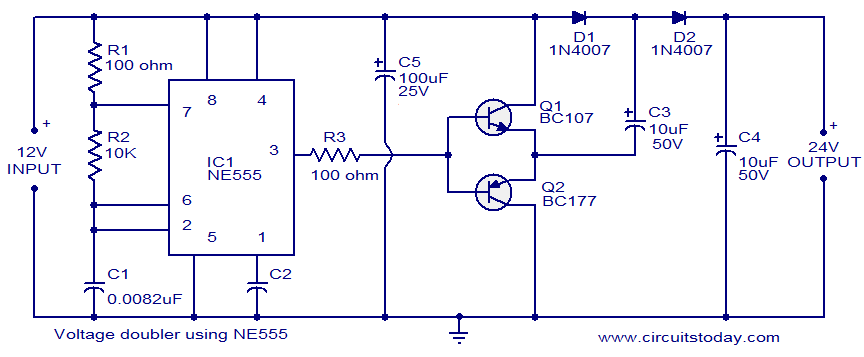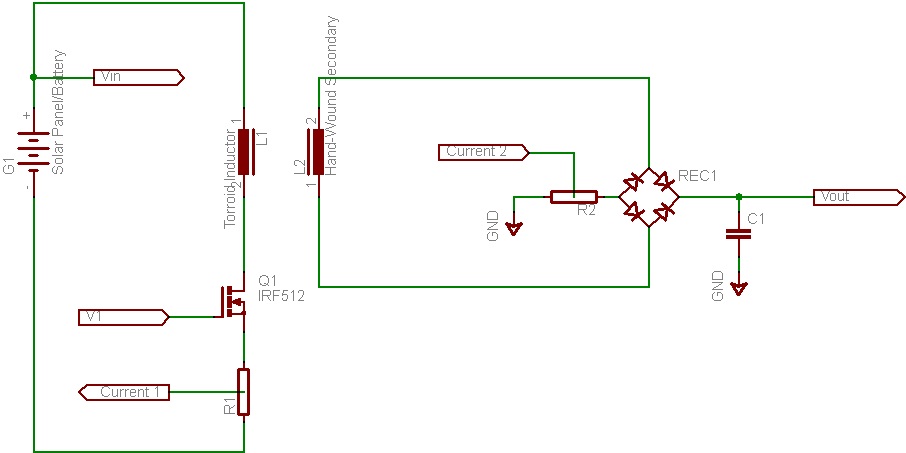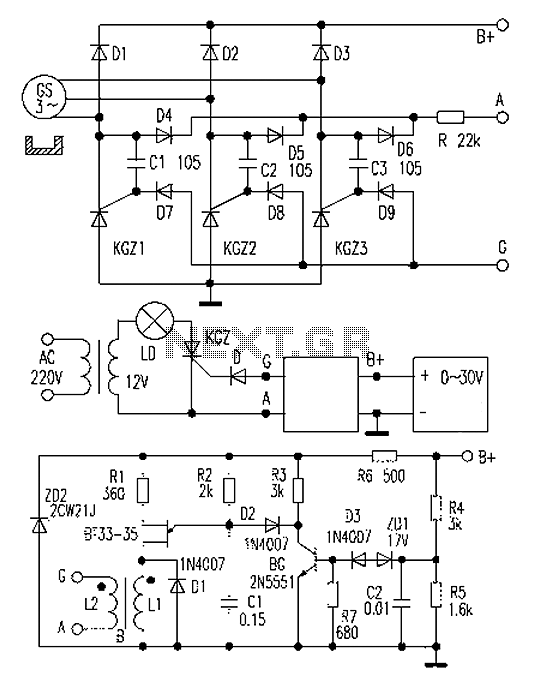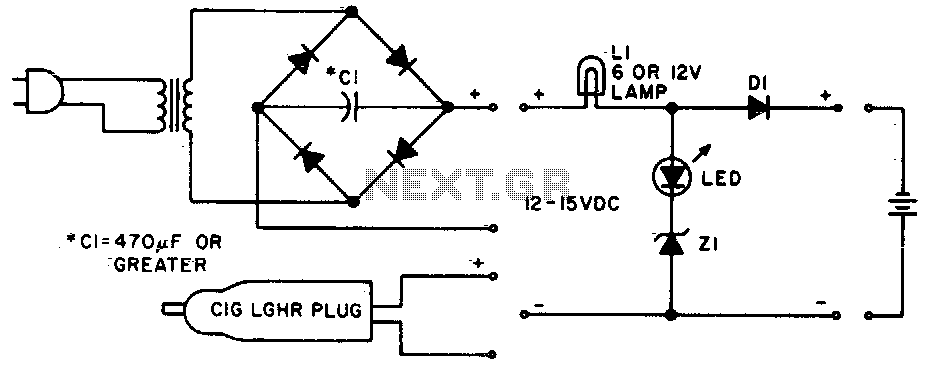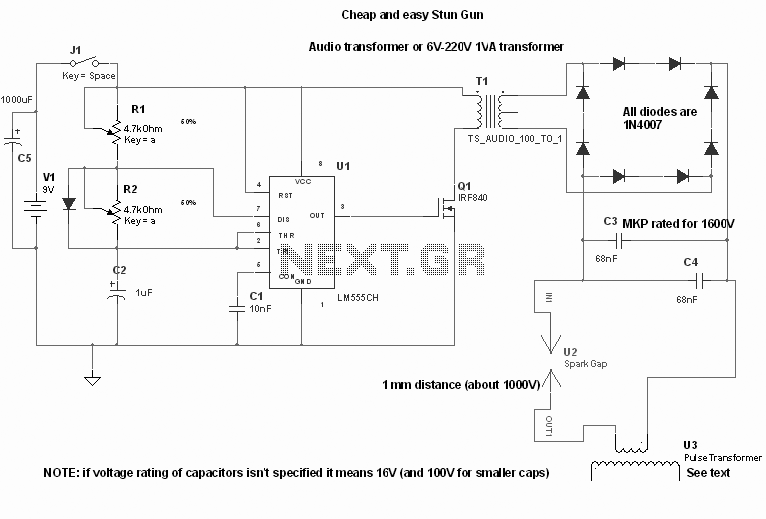
VOLTAGE TUNED CLAPP OSCILLATOR

This voltage-tuned Clapp oscillator utilizes a varactor diode to determine its operating frequency. The diode used is an NTE614, and the inductor L1 has a value of approximately 7 microhenries. With this configuration, the oscillator can operate within a frequency range of approximately 6 to 15 MHz.
The voltage-tuned Clapp oscillator is a specialized type of oscillator circuit that leverages the variable capacitance of a varactor diode to adjust its frequency of oscillation. The NTE614 varactor diode plays a crucial role in this setup, allowing for fine-tuning of the frequency as the applied reverse voltage changes. This feature makes the oscillator particularly useful in applications requiring frequency modulation or tuning.
In the circuit configuration, L1, with its inductance of around 7 microhenries, works in conjunction with the varactor diode to form a resonant LC circuit. The resonant frequency of the oscillator can be calculated using the formula:
\[ f = \frac{1}{2\pi\sqrt{LC}} \]
where \( L \) is the inductance and \( C \) is the capacitance provided by the varactor diode. As the reverse voltage across the diode is varied, the capacitance changes, thus altering the resonant frequency of the circuit.
The frequency range specified, from approximately 6 MHz to 15 MHz, indicates that this oscillator can be effectively used in various radio frequency applications, including signal generation for transmitters and receivers, as well as in frequency synthesizers. The choice of components, such as the NTE614 diode and the specific inductance of L1, is critical for achieving the desired performance characteristics and ensuring stability throughout the operational frequency range.
In practical implementations, careful consideration must be given to the power supply and the quality of the components to minimize noise and improve the oscillator's output signal integrity. Proper layout and shielding techniques should also be employed to prevent unwanted interference and to maintain the oscillator's performance across its frequency range.This voltage-tuned Clapp oscillator uses a varactor diode to set its operating frequency. D1 is an NTE614. L1 is about 7/ ’ (MHz) microhenries. With the circuit shown, the frequency range is about 6 to 15 MHz. 🔗 External reference
The voltage-tuned Clapp oscillator is a specialized type of oscillator circuit that leverages the variable capacitance of a varactor diode to adjust its frequency of oscillation. The NTE614 varactor diode plays a crucial role in this setup, allowing for fine-tuning of the frequency as the applied reverse voltage changes. This feature makes the oscillator particularly useful in applications requiring frequency modulation or tuning.
In the circuit configuration, L1, with its inductance of around 7 microhenries, works in conjunction with the varactor diode to form a resonant LC circuit. The resonant frequency of the oscillator can be calculated using the formula:
\[ f = \frac{1}{2\pi\sqrt{LC}} \]
where \( L \) is the inductance and \( C \) is the capacitance provided by the varactor diode. As the reverse voltage across the diode is varied, the capacitance changes, thus altering the resonant frequency of the circuit.
The frequency range specified, from approximately 6 MHz to 15 MHz, indicates that this oscillator can be effectively used in various radio frequency applications, including signal generation for transmitters and receivers, as well as in frequency synthesizers. The choice of components, such as the NTE614 diode and the specific inductance of L1, is critical for achieving the desired performance characteristics and ensuring stability throughout the operational frequency range.
In practical implementations, careful consideration must be given to the power supply and the quality of the components to minimize noise and improve the oscillator's output signal integrity. Proper layout and shielding techniques should also be employed to prevent unwanted interference and to maintain the oscillator's performance across its frequency range.This voltage-tuned Clapp oscillator uses a varactor diode to set its operating frequency. D1 is an NTE614. L1 is about 7/ ’ (MHz) microhenries. With the circuit shown, the frequency range is about 6 to 15 MHz. 🔗 External reference
